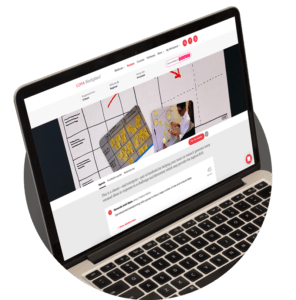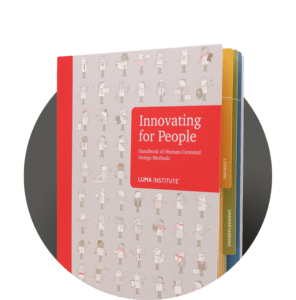Method overview
Philosopher Otto Weininger said, “All genius is a conquering of chaos and mystery.” Sometimes in the midst of a project, an overwhelming amount of information or ambiguity threatens to bog down the pace of progress. Affinity Clustering will help you avoid this roadblock. Whether analyzing research data or considering creative ideas, you can use this method to organize items into logical groups. It is an easy way to bring order to chaos!
Patterns are revealed when teams sort items based on perceived similarity, defining commonalities that are inherent but not necessarily obvious. In this way you are able to draw insights and new ideas out of otherwise disparate pieces of information. Discerning patterns among data (or any multitude of items) is also a useful way of taming complexity. As professor Herb Simon said, “Most of the complex structures found in the world are enormously redundant, and we can use this redundancy to simplify their description.”
The benefits of this method
- Helps you identify issues and insights.
- Reveals thematic patterns.
- Facilitates productive discussion.
- Builds a shared understanding.

Quick guide
- Identify a topic for consideration.
- Gather a data set (research findings, ideas, etc).
- Record each item on a separate card or sticky note.
- Form a team of collaborators and pick a facilitator.
- Have one person describe, then place, an item.
- Invite others to place similar items in proximity.
- Repeat the pattern until all items are included.
- Discuss and rearrange items as groupings emerge.
- Label the clusters that finally take shape.
Helpful hints
- Don’t label the clusters too early. They may shift.
- Look for opportunities to create subgroupings.
- Consider using color to code different types of data.
Combining LUMA methods into design recipes
The methods in the LUMA System are great on their own, but they are really powerful when combined into design recipes. Just like when you combine ingredients to make a tasty meal, you can also combine design methods to address challenges such as improving workplace culture or uncovering customer insights.
An example of a recipe from LUMA Workplace®:


Want to learn more about LUMA methods?


